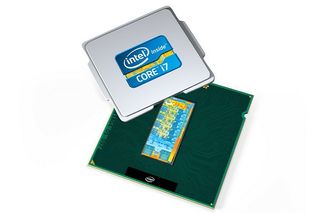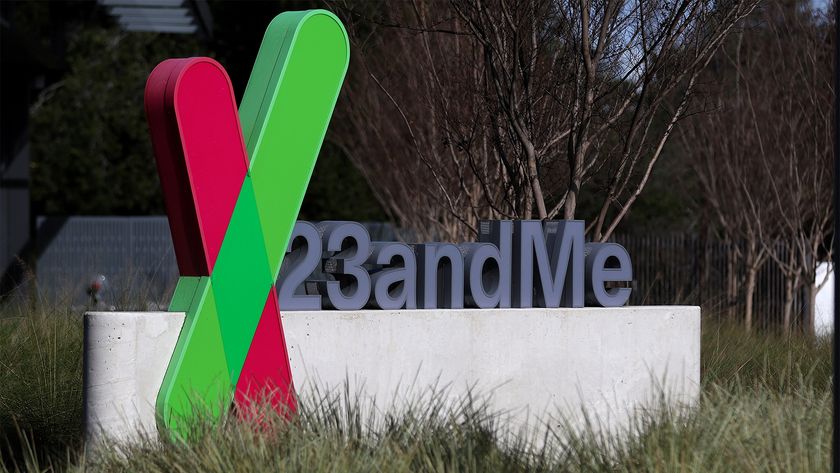Intel Ivy Bridge vs AMD Trinity head-to-head review
We compare the design, performance, business features, availability and price to see which chipset you should invest in.
Intel has been the market leader for sometime and Ivy Bridge is the CPU industry's first range of 22nm processors. This makes it 10nm smaller than Trinity, and this comes with a range of architectural benefits - not least improved efficiency and reduced heat, which should primarily provide better battery life in laptops.
Ivy Bridge also includes an upgraded graphics core, with the HD 2500 and HD 4000 chips arriving across Core i3, i5 and i7 processors. The latter is the only one to debut so far, and it also supports DirectX 11 as well as AVC encoding for video work. It's an improvement on older models, although the HD 2500 core won't be able to match the levels of graphics power delivered by Trinity.
Winner : Draw - AMD's APU approach deserves plaudits and provides a more balanced chipset, but the 22nm processor from Intel is an achievement.

Ivy Bridge processors are the first to be built using the 22nm process
Results
We've tested the A10-4600M, which was supplied in an AMD-branded test machine and is a high-end Trinity chip. It's quad-core, with each core running at 2.3GHz with a maximum boost of 3.2GHz on a single core, and it's packaged with a Radeon HD 7660G graphics core - a current-generation part boasting 384 stream processors and a 497MHz core clock speed.
In our application benchmarks the A10-4600M returned an overall score of 0.58. That's reasonable, but it competes with Intel's cheaper chips: the 2.3GHz Core i3-2350M scored 0.62 in the same tests. Laptops with the high-end 2.2GHz Core i7-3610QM processor, scored a whopping 0.94 in the application benchmarks. Desktop parts are even quicker, with overclocked Ivy Bridge systems hitting 1.2 and above in those tests.
AMD claims that Trinity's real trump card is its graphics performance. Our low-quality Crysis benchmark is run at 1,366 x 768, and the Radeon HD 7660G scored 47fps in this test, and a score of 20fps in our 1,600 x 900 medium-quality test is impressive.
Get the ITPro. daily newsletter
Sign up today and you will receive a free copy of our Focus Report 2025 - the leading guidance on AI, cybersecurity and other IT challenges as per 700+ senior executives
Intel has responded with its HD 4000 graphics core, which is included inside every single mobile Ivy Bridge processor and seven of the firm's latest desktop chips. Its benchmark results outperform Trinity, with a score of 48fps in our Low quality test and 24fps in the Medium quality benchmark. That gives Intel the lead at the moment, but bear in mind that desktop-based Trinity parts are coming, and top-end chips will included a desktop version of that Radeon HD 7660 chipset - a part which is likely to give AMD the lead.
Winner - Intel - The high-end Core i7 Ivy Bridge processor outperforms best AMD has to offer in terms of laptops. Things may be different on the desktop side, but AMD has yet to release the high-performance Piledriver processors.
Mike Jennings has worked as a technology journalist for more than a decade and has been fascinated by computers since childhood, when he spent far too long building terrible websites. He loves desktop PCs, components, laptops and anything to do with the latest hardware.
Mike worked as a staff writer at PC Pro magazine in London for seven years, and during that time wrote for a variety of other tech titles, including Custom PC, Micro Mart and Computer Shopper. Since 2013, he’s been a freelance tech writer, and writes regularly for titles like Wired, TechRadar, Stuff, TechSpot, IT Pro, TrustedReviews and TechAdvisor. He still loves tech and covers everything from the latest business hardware and software to high-end gaming gear, and you’ll find him on plenty of sites writing reviews, features and guides on a vast range of topics.
You can email Mike at mike@mike-jennings.net, or find him on Twitter at @mikejjennings
















